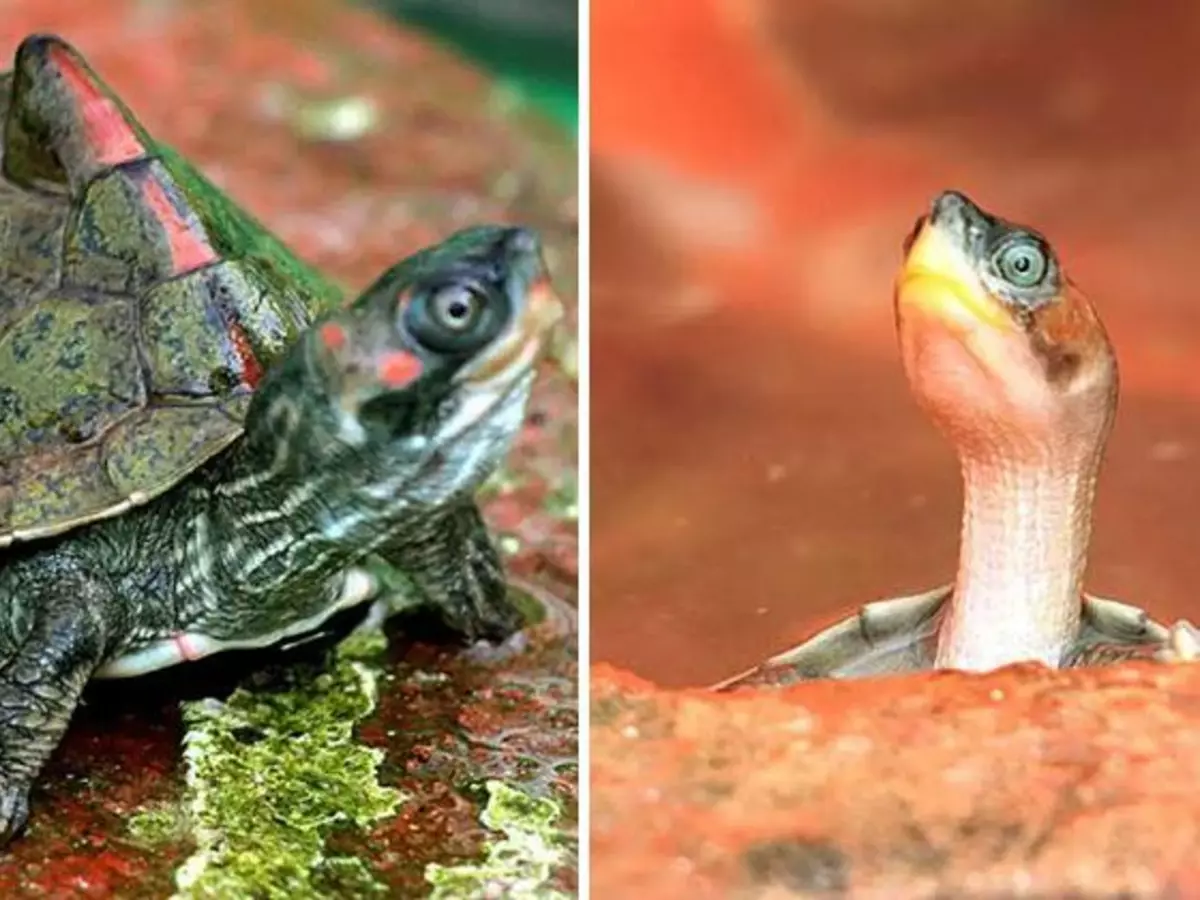Where Faith Teaches Respect For Life: UP Man Shows How To Save Turtles In The River
Sixty-four-year old Bheema is a resident of Makhdoompur village on the banks of the Ganga near Hastinapur Wildlife Sanctuary. He has no illusions about the difficult life his fellow villagers and he have to navigate. But Bheema and others like

Sixty-four-year old Bheema is a resident of Makhdoompur village on the banks of the Ganga near Hastinapur Wildlife Sanctuary. He has no illusions about the difficult life his fellow villagers and he have to navigate. But Bheema and others like him have found a new outlet for their faith and hopes ¡ª saving turtles in the river.
¡°Our lives go by struggling with problems. At least they should survive,¡± said Bheema, standing at the riverbank early in the morning, looking out at the Ganga.
While community participation has been the key behind conservation success stories in the country, saving turtles has taken on the form of a religious mission for villagers near Hastinapur.

toi
Every season, freshwater hardshell turtles lay eggs along the riverbank snaking past 50 of these villages. With the aid of hundreds of farmers like Bheema, more than 3,000 turtles have been saved and released into the Ganga in five years.
Residents of Makhdoompur and other villages lose their crops when the Ganga floods, or are forced out of their homes every year. But turtle conservation has become such a sacred task for them that this season, too, they will comb the riverbanks for eggs to save.
¡°The Ganga is our mother. These turtles clean the river, and eventually our mortal remains will be assimilated here. By saving the turtles, we are saving our goddess,¡± said Pritam Kumar, also from Makhdoompur.

toi
This mix of faith and conservation was not always there. In 2012, a young environmentalist named Sanjeev Yadav, working with the Worldwide Fund of Nature (WWF), wanted to revive the dwindling turtle population in the sanctuary, which covers 2,074 sq km across five districts of Uttar Pradesh. But it was impossible without the help of villagers. The eggs were getting destroyed by wild animals or under the implements of the farmers.
¡°I faced a lot of resistance among villagers at first. Obviously, for them mere survival was a priority. Caring about turtles did not come easily under the circumstances in which they lived,¡± recalled Yadav, who then tried a different approach.
¡°Despite the havoc during monsoons, the Ganga is revered by villagers as a mother. I tackled conservation through this deep religious belief system, pointing out how turtles helped clean the river,¡± Yadav added.
The villagers used to find hundreds of eggs while tilling the soil, but would throw them away. ¡°Then there are some communities which eat the eggs. So the survival rate used to be very low. Things are different now,¡± Kumar smiled.

toi
Farmers have been helping Yadav establish and maintain hatcheries where the baby amphibians get space to grow before entering the river.
Lives have changed in other ways in the process. ¡°I used to do illegal fishing in the sanctuary earlier, and opposed conservation efforts. But now I might be one of the biggest contributor of eggs in the programme. The credit goes to Yadav ji.
I have left fishing and just serve Mother Ganga. Perhaps through this we will be able to reverse our fortunes with the blessings of the goddess,¡± said Bheema.
Villagers first spot the eggs after laying season begins in late November. They inform the WWF team and help transport the eggs to hatcheries. They then guard the eggs till they hatch in April, a process which continues till June.

toi
The hatchlings after that are moved to a nursery in forest department office premises 10 km from the river in Hastinapur. In November-December, the turtles are released in the Ganga by villagers and their children.
¡°We had never seen it before. Just a year ago, Sanjeev Bhaiyya took us to a hatchery and showed us hatchlings coming out of the sand after breaking out from eggs. A few months later, I released many of the turtles into the Ganga. Now we keep looking for eggs,¡± said 9-year-old Arjun, while 12-year-old Ram Kumar giggled that he found the highest number of eggs last year. The "sacred task" clearly is being handed over to the next generation.
